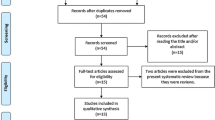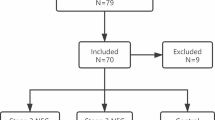Abstract
We aimed to establish the utility of serum cytosolic β-glycosidase (CBG) assay as a NEC diagnosis tool. CBG activity has been compared in 192 NEC-free (NEC−) and 13 NEC-affected (NEC+) neonates, with modified Bell’s stages II/III, born at Reina Sofia University Hospital; additional blood hematology, microbiology, and biochemical parameters have been assayed. NEC+ neonates have higher serum CBG activity, 26.4 ± 12.4 mU/mg; 95 % CI (18.8–33.9), than NEC− infants, 11.0 ± 6.6 mU/mg; 95 % CI (10.1–11.9) (p < 0.0001). The CBG cutoff value in the ROC curve, 15.6 mU/mg, discriminates NEC+/NEC− infants with 84.6 % sensitivity, 85.9 % specificity, 37.9 positive predictive value and 98.2 negative predictive value, 6.11 positive likelihood ratio and 0.18 negative likelihood ratio, 33.61 DOR, and 0.89 AUC. A combined panel [CBG + aspartate aminotransferase + C-reactive protein] shows a 0.90 AUC value in multiple linear regressions.
Conclusions: The serum CBG level is a good NEC diagnosis test and a novel NEC biomarker which may become a screening tool.
What is known: •NEC affects ∼2.5 % of infants at NICU, ∼90 % of them weighing <1500 g. •NEC requires a careful differential diagnosis, being lethal if not diagnosed and treated. |
What is new: •CBG assay will be useful to determine infants without NEC and preventing unnecessary treatment. •CBG assay could discriminate NEC better than other gut-specific sera protein biomarkers. |



Similar content being viewed by others
Notes
Gómez-Chaparro Moreno JL, et al. (2005, Oct). Determinación de los niveles de la enzima β-glucosidasa citosólica en sangre. Poster presented at the XIX “Congreso Nacional de la Sociedad Española de Pediatría Extrahospitalaria y Atención Primaria”. Madrid.
Abbreviations
- ALT:
-
Alanine aminotransferase
- AST:
-
Aspartate aminotransferase
- AUC:
-
Area under curve
- BUN:
-
Blood urea nitrogen
- CBG:
-
Cytosolic β-glycosidase
- DOR:
-
Diagnostic odds ratio
- ICC:
-
Intraclass correlation coefficient
- LH+ :
-
Positive likelihood ratio
- LH− :
-
Negative likelihood ratio
- MLR:
-
Multiple logistic regression
- NEC:
-
Necrotizing enterocolitis
- NEC+ :
-
NEC-affected neonates
- NEC− :
-
Neonates without NEC
- NPV:
-
Negative predictive value
- NICU:
-
Neonatology intensive care unit
- CRP:
-
C-reactive protein
- PPV:
-
Positive predictive value
- PRBT:
-
Packed red blood transfusion
- ROC:
-
Receiver operating characteristic
- RSUH:
-
Reina Sofia University Hospital
- S:
-
Sensitivity
- SLR:
-
Simple logistic regression
- SP:
-
Specificity
References
Benkoe TM, Mechtler TP, Pones M, Prusa AR, Klebermass-Schrehof K, Rebhandl W, Kasper DC (2015) The plasma activities of lysosomal enzymes in infants with necrotizing enterocolitis: new promising class of biomarkers? Clin Chim Acta 438(1):279–283
Caplan MS, Sun XM, Hseuh W, Hageman JR (1990) Role of platelet activating factor and tumor necrosis factor-alpha in neonatal necrotizing enterocolitis. J Pediatr 116(6):960–964
De Graaf M, van Veen IC, van der Meulen-Muileman IH, Gerritsen WR, Pinedo HM, Haisma HJ (2001) Cloning and characterization of human liver cytosolic beta-glycosidase. Biochem J 356(Pt 3):907–910
Dimmitt RA, Glew R, Colby C, Brindle M, Skarsgard E, Moss R (2003) Serum cytosolic beta-glucosidase activity in a rat model of necrotizing enterocolitis. Pediatr Res 54(4):462–465
Dongmei C, Guofeng L, Weilin P (2012) Serum cytosolic beta-glucosidase levels in neonatal necrotizing enterocolitis. Iran J Pediatr 22(4):452–456
Edelson MB, Bagwell CE, Rozycki HJ (1999) Circulating pro- and counterinflammatory cytokine levels and severity in necrotizing enterocolitis. Pediatrics 103(4Pt1):766–771
Edelson MB, Sonnino RE, Bagwell CE, Lieberman JM, Marks WH, Rozycki HJ (1999) Plasma intestinal fatty acid binding protein in neonates with NEC: a pilot study. J Pediatr Surg 34(10):1453–1457
Evennett N, Alexander N, Petrov M, Pierro A, Eaton S (2009) A systematic review of serologic tests in the diagnosis of necrotizing enterocolitis. J Pediatr Surg 44(11):2192–2201
Fitzgibbons SC, Ching Y, Yu D, Carpenter J, Kenny M, Weldon C, Lillehei C, Valim C, Horbar JD, Jaksic T (2009) Mortality of necrotizing enterocolitis expressed by birth weight categories. J Pediatr Surg 44(6):1072–1076
Forsythe RM, Xu DZ, Lu Q, Deitch EA (2002) Lipopolysaccharide-induced enterocyte-derived nitric oxide induces intestinal monolayer permeability in an autocrine fashion. Shock 17(3):180–184
Gareau MG, Silva MA, Perdue MH (2008) Pathophysiological mechanisms of stress-induced intestinal damage. Curr Mol Med 8(4):274–281
Gounaris A, Alexiou N, Costalos C, Daniilidou M, Frangou E, Konstandellou E (1997) Gut hormone concentrations in preterm infants with necrotizing enterocolitis. Acta Paediatr 86(7):762–763
Guthmann F, Borchers T, Wolfrum C, Wustrack T, Bartholomaus S, Spener F (2002) Plasma concentration of intestinal- and liver-FABP in neonates suffering from necrotizing enterocolitis and in healthy preterm neonates. Mol Cell Biochem 239(1-2):227–234
Henrissat B (1991) A classification of glycosyl hydrolases based on amino acid sequence similarities. Biochem J 280(Pt 2):309–316
Holman RC, Stoll BJ, Curns AT, Yorita KL, Steiner CA, Schonberger LB (2006) Necrotising enterocolitis hospitalisations among neonates in the United States. Paediatr Perinat Epidemiol 20(6):498–506
Isaacs D, North J, Lindsell D, Wilkinson AR (1987) Serum acute phase reactants in necrotizing enterocolitis. Acta Paediatr Scand 76(6):923–927
Jurges ES, Henderson DC (1996) Inflammatory and immunological markers in preterm infants: correlation with disease. Clin Exp Immunol 105(3):551–555
Kao LS, Morris BH, Lally KP, Stewart CD, Huseby V, Kennedy KA (2006) Hyperglycemia and morbidity and mortality in extremely low birth weight infants. J Perinatol 26(12):730–736
Kastenberg ZJ, Sylvester KG (2013) The surgical management of necrotizing enterocolitis. Clin Perinatol 40(1):135–148
Kliegman RM, Fanaroff AA (1981) Neonatal necrotizing enterocolitis: a nine-year experience. Am J Dis Child 135(7):603–607
Kliegman RM, Fanaroff AA (1984) Necrotizing enterocolitis. New Engl J Med 310(17):1093–103
Kling PJ, Hutter JJ (2003) Hematologic abnormalities in severe neonatal necrotizing enterocolitis: 25 years later. J Perinatol 23(7):523–530
Kultursay N, Kantar M, Akisu M, Huseyinov A, Coker I (1999) Platelet-activating factor concentrations in healthy and septic neonates. Eur J Pediatr 158(9):740–741
Lieberman JM, Sacchettini J, Marks C, Marks WH (1997) Human intestinal fatty acid binding protein: report of an assay with studies in normal volunteers and intestinal ischemia. Surgery 121(3):335–342
McLachlan R, Coakley J, Murton L, Campbell N (1993) Plasma intestinal alkaline phosphatase isoenzymes in neonates with bowel necrosis. J Clin Pathol 46(7):654–659
Morini F, di Crosta I, Ronchetti MP, Dituri F, Nahom A, Corchia C, Bagolan P (2008) Lactate dehydrogenase activity is increased in plasma of infants with advanced necrotizing enterocolitis. Pediatr Surg Int 24(6):705–709
Morowitz MJ, Poroyko V, Caplan M, Alverdy J, Liu DC (2010) Redefining the role of intestinal microbes in the pathogenesis of necrotizing enterocolitis. Pediatrics 125(4):777–785
Morris S, Hays W, Enomoto M, Glew R, Feddersen R, Fry D, Morris D (1999) Serum cytosolic beta-glucosidase elevation and early ischemic injury to guinea pig small intestine. Surgery 125(2):202–210
Neu J, Walker WA (2011) Necrotizing enterocolitis. N Engl J Med 364(3):255–264
Ng PC, Ang IL, Chiu RW, Li K, Lam HS, Wong RP, Chui KM, Hm C, Ng EW, Fok TF, Sung JJ, Lo YM, Poon TC (2010) Host-response biomarkers for diagnosis of late-onset septicemia and necrotizing enterocolitis in preterm infants. J Clin Invest 120(8):2989–3000
Ng PC, Chan KYY, Poon TCW (2013) Biomarkers for prediction and diagnosis of necrotizing enterocolitis. Clin Perinatol 40(1):149–159
Ng PC, Li K, Chui KM, Leung TF, Wong RP, Chu WC, Wong E, Fok TF (2007) IP-10 is an early diagnostic marker for identification of late-onset bacterial infection in preterm infants. Pediatr Res 61(1):93–98
Patel BK, Shah JS (2012) Necrotizing enterocolitis in very low birth weight infants: a systemic review. ISRN Gastroenterol 2012:562594
Pourcyrous M, Bada HS, Korones SB, Baselski V, Wong SP (1993) Significance of serial C-reactive protein responses in neonatal infection and other disorders. Pediatrics 92(3):431–435
Pourcyrous M, Korones SB, Yang W, Boulden TF, Bada HS (2005) C-reactive protein in the diagnosis, management, and prognosis of neonatal necrotizing enterocolitis. Pediatrics 116(5):1064–1069
Rabinowitz SS, Dzakpasu P, Piecuch S, Leblanc P, Valencia G, Kornecki E (2001) Platelet-activating factor in infants at risk for necrotizing enterocolitis. J Pediatr 138(1):81–86
Ragazzi S, Pierro A, Peters M, Fasoli L, Eaton S (2003) Early full blood count and severity of disease in neonates with necrotizing enterocolitis. Pediatr Surg Int 19(5):376–379
Rastogi S, Olmez I, Bhutada A, Rastogi D (2011) Drop in platelet counts in extremely preterm neonates and its association with clinical outcomes. J Pediatr Hematol/Oncol 33(8):580–584
Rest RF, Cooney MH, Spitznagel JK (1978) Subcellular distribution of glycosidases in human polymorphonuclear leucocytes. Biochem J 174(1):53–59
Richir MC, Siroen MP, van Elburg RM, Fetter WP, Quik F, Nijveldt RJ, Heij HA, Smit BJ, Teerlink T, van Leeuwen PA (2007) Low plasma concentrations of arginine and asymmetric dimethylarginine in premature infants with necrotizing enterocolitis. Br J Nutr 97(5):906–911
Scheifele DW (1990) Role of bacterial toxins in neonatal NEC. J Pediatr 117(1 Pt 2):S44–S46
Shamir R, Maayan-Metzger A, Bujanover Y, Ashkenazi S, Dinari G, Sirota L (2000) Liver enzyme abnormalities in gram-negative bacteremia of premature infants. Pediatr Infect Dis J 19(6):495–498
Sharma R, Hudak ML, Tepas JJ 3rd, Wludyka PS, Marvin WJ, Bradshaw JA, Pieper P (2006) Impact of gestational age on the clinical presentation and surgical outcome of necrotizing enterocolitis. J Perinatol 26(6):342–347
Sharma R, Kraemer DF, Torrazza RM, Mai V, Neu J, Shuster JJ, Hudak M (2014) Packed red blood cell transfusion is not associated with increased risk of necrotizing enterocolitis in premature infants. J Perinatol 21:1–5
Sharma R, Tepas JJ 3rd, Hudak ML, Mollitt DL, Wludyka PS, Teng RJ, Premachandra BR (2007) Neonatal gut barrier and multiple organ failure: role of endotoxin and proinflammatory cytokines in sepsis and necrotizing enterocolitis. J Pediatr Surg 42(3):454–461
Swets JA (1988) Measuring the accuracy of diagnostic systems. Science 240(4857):1285–1293
Tepas JJ 3rd, Sharma R, Leaphart CL, Celso BG, Pieper P, Esquivia-Lee V (2010) Timing of surgical intervention in necrotizing enterocolitis can be determined by trajectory of metabolic derangement. J Pediatr Surg 45(2):310–314
Walsh MC, Kliegman RM (1986) Necrotizing enterocolitis: treatment based on staging criteria. Pediatr Clin North Am 33(1):179–201
Walsh MC, Kliegman RM, Hack M (1989) Severity of necrotizing enterocolitis: influence on outcome at 2 years of age. Pediatrics 84(5):808–814
Yu SP (2003) Regulation and critical role of potassium homeostasis in apoptosis. Prog Neurobiol 70(4):363–386
Zamora J, Abraira V, Muriel A, Khan K, Coomarasamy A (2006) Meta-DiSc: a software for meta-analysis of test accuracy data. BMC Med Res Methodol 6:31
Authors’ contributions
Dr. Gómez-Chaparro Moreno: conceptualized and designed the study; carried out the analyses, analyzed the data, and interpreted the results; reviewed and revised the manuscript. Dr. Rodríguez Torronteras: designed the study, supervised the data collection, and interpreted the results; reviewed and revised the manuscript. Dra. Ruiz Gónzalez: designed the study and carried out the analyses and analyzed the data. Dra. Izquierdo Palomares: conceptualized and designed the study; carried out the analyses and helped in collecting the data; revised the manuscript. Dra. Ruiz Laguna: carried out the analyses and analyzed the data. Dr. Bonilla Valverde: carried out the analyses, analyzed the data, and interpreted the results. Prof. López-Barea: conceptualized and designed the study; supervised the data collection and interpreted the results; drafted the article and revised critically the manuscript. Prof. Delgado Rubio: revised critically the manuscript. All authors approved the final manuscript as submitted.
Author information
Authors and Affiliations
Corresponding author
Ethics declarations
Conflict of interest
The authors declare that they have no conflicts of interest.
Funding source
This study was funded by grants from (1) the Health Research Fund, Carlos III Institute of Health, Health and Consumption Ministry, Spain (FIS, 05/609) and (2) the Health Agency, Andalusian Government, Spain (146/05).
Ethical approval
All procedures performed in studies involving human participants were in accordance with the ethical standards of the institutional RSUH research committee and with the 1964 Helsinki declaration and its later amendments. Informed consent was obtained from all neonates’ parents or legal tutor included in the study.
Additional information
Communicated by Patrick Van Reempts
Rights and permissions
About this article
Cite this article
Gómez-Chaparro Moreno, J.L., Rodríguez Torronteras, A., Ruiz González, M.D. et al. The β-glucosidase assay: a new diagnostic tool for necrotizing enterocolitis. Sensitivity, specificity, and predictive values. Eur J Pediatr 175, 931–941 (2016). https://doi.org/10.1007/s00431-016-2724-8
Received:
Revised:
Accepted:
Published:
Issue Date:
DOI: https://doi.org/10.1007/s00431-016-2724-8




